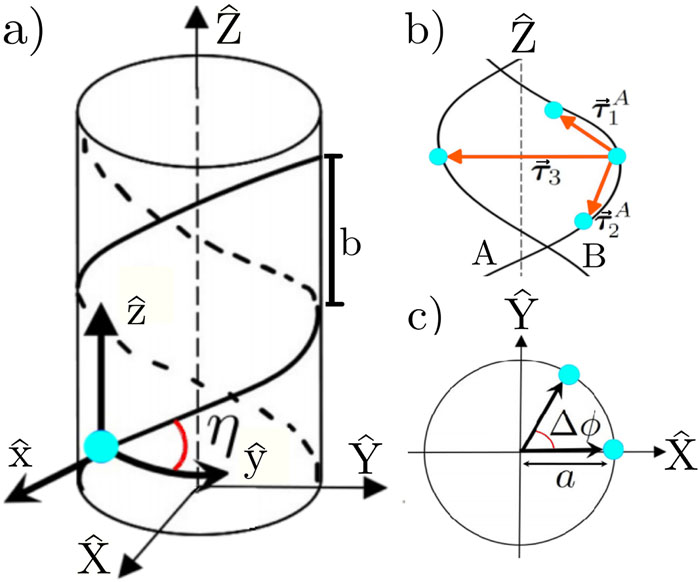We address the electron-spin-phonon coupling in an effective model Hamiltonian for DNA to assess its role in spin transfer involved in the Chiral-Induced Spin Selectivity (CISS) effect. The envelope function approach is used to describe semiclassical electron transfer in a tight-binding model of DNA at half filling in the presence of intrinsic spin–orbit coupling. Spin-phonon coupling arises from the orbital-configuration dependence of the spin–orbit interaction. We find spin-phonon coupling only for the acoustic modes, while the optical modes exhibit electron–phonon interaction without coupling to spin. We derive an effective Hamiltonian whose eigenstates carry spin currents that are protected by spin-inactive stretching optical modes. As optical phonons interact more strongly than acoustic phonons, side buckling and tilting optical base modes will be more strongly associated with decoherence, which allows for the two terminal spin filtering effects found in CISS.

We address the electron-spin-phonon coupling in an effective model Hamiltonian for DNA to assess its role in spin transfer involved in the Chiral-Induced Spin Selectivity (CISS) effect. The envelope function approach is used to describe semiclassical electron transfer in a tight-binding model of DNA at half filling in the presence of intrinsic spin–orbit coupling. Spin-phonon coupling arises from the orbital-configuration dependence of the spin–orbit interaction. We find spin-phonon coupling only for the acoustic modes, while the optical modes exhibit electron–phonon interaction without coupling to spin. We derive an effective Hamiltonian whose eigenstates carry spin currents that are protected by spin-inactive stretching optical modes. As optical phonons interact more strongly than acoustic phonons, side buckling and tilting optical base modes will be more strongly associated with decoherence, which allows for the two terminal spin filtering effects found in CISS.
